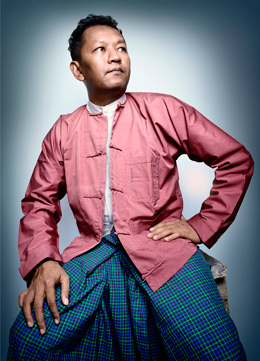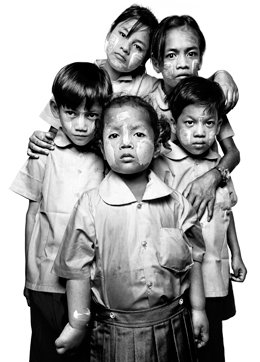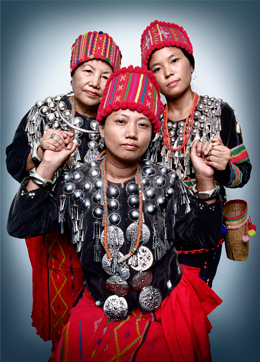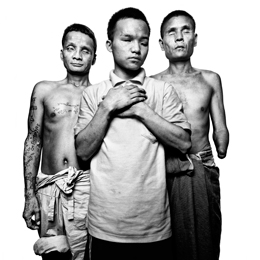Magazine
PHOTO ESSAY
PORTRAITS FROM EXILE
By THE IRRAWADDY
DECEMBER, 2010 - VOL.18, NO.12
PHOTOGRAPHS BY PLATON FOR HUMAN RIGHTS WATCH
In May 2010, Human Rights Watch took leading portrait photographer Platon to the Thai-Burmese border to photograph former political prisoners, civil society leaders, ethnic minority group members, journalists and other people in exile from their country, Burma.
All of those in this portrait portfolio have experienced human rights abuses in Burma and sought refuge in Thailand. Instead of being demoralized and defeated, they have united and use their shared experiences to educate and work for a better future for all of Burma’s people. Although forced into exile, they have not been silenced.
 |
 |
In Burma, the HIV/AIDS medication supply is so limited that only one in four people requiring treatment receives it. These children, who are HIV positive, were orphaned or sent by their parents to the Social Action for Women’s safe house, the Children’s Crisis Center in Mae Sot, for treatment or protection. SAW provides shelter, education and basic services for Burmese children including antiretroviral medication.<
 |
Shirley Seng, 63, Mary Labang, 36, and Nan Pyung, 21, are members of the Kachin Women’s Association Thailand in Chiang Mai. They speak out against the multiple forms of violence in Burma that result in the displacement, trafficking and migration of indigenous Kachin women, as well as women belonging to other ethnic minorities such as the Karen, Lahu and Shan.
 |
1 | 2 | 3 next page »
|
||
|
||
|
||
|
||
more articles in this section
